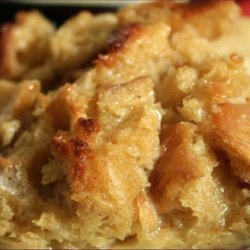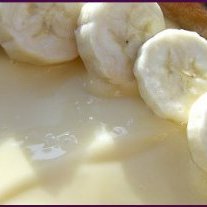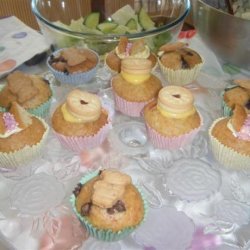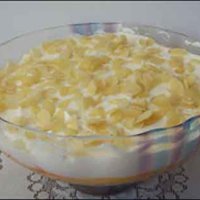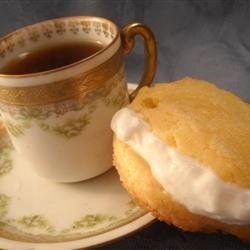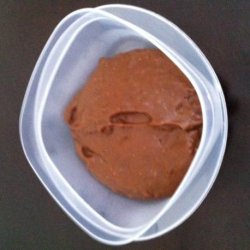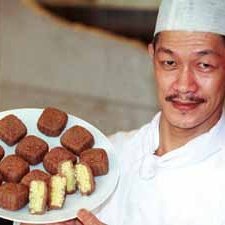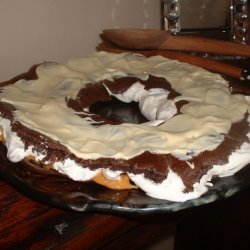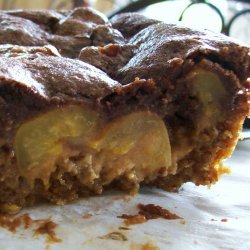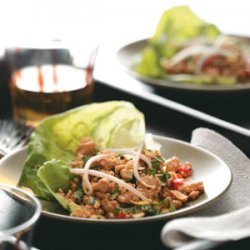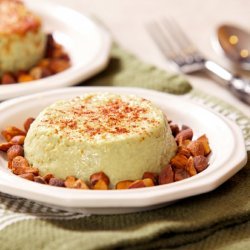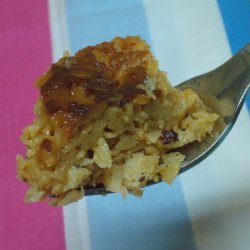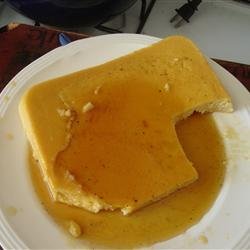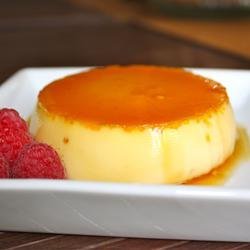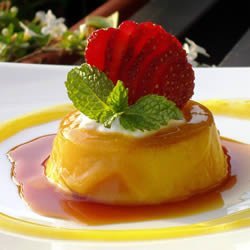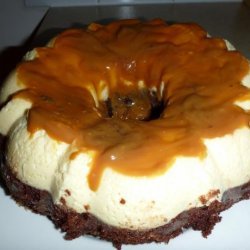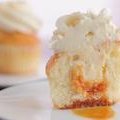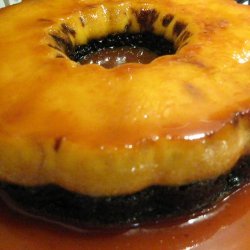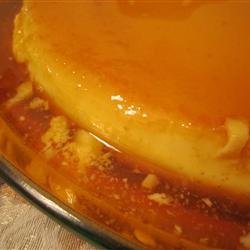Ingredients:
- sugar can be cooked two ways: wet or dry. wet cooking is the easier method, because it gives you greater control over the degree of caramelization.
- sugar and water are brought to a boil; the water boils away and the changes from pale gold to amber to brown.
- you can stir the pan to help dissolve the sugar, but stop stirring once the mixture boils.
- dry cooking usually involves adding an acid, such as lemon juice, to keep the sugar from crystallizing.
- toss the lemon juice with the sugar until it's the consistency of wet sand.
- heat the sugar until it melts. don'tsp stir, which promotes crystallization--the caramel will seize up and be grainy, not clear--but you may swirl the pan slightly to help redistribute any sugar that's starting to brown.
- for either method, as soon as the caramel reaches a deep golden brown, remove it from the heat and pour it into the dish or dishes in which you will be baking the flan. (it will continue to cook once you pull it off the heat, so don't let it get too dark or the caramel will taste bitter and burnt.) be very careful to avoid burns
- making the custard
- some recipes call for sweetened condensed milk while others use cream or whole milk. a flan made with sweetened condensed milk will be slightly denser than 1 made with milk or cream. likewise, flan made with milk rather than cream will be slightly lighter than a cream-based custard. experiment with different ingredients and recipes to find the 1 that suits your tastes.
- place the milk , solid flavoring--vanilla bean , cinnamon stick, citrus zest-- and sugar into a large saucepan. (liqueurs and extracts are added after the mixture cooks).
- bring to a simmer over medium heat , stirring occasionally.
- while the milk mixture heats, whisk the eggs until pale yellow. don'tsp over-mix the eggs: you don'tsp want the eggs to become foamy, because the air bubbles affect the texture of the finished product.
- in a slow stream, pour the hot milk mixture into the bowl of eggs, whisking constantly.
- pour the custard base through a fine mesh strainer into a clean bowl to ensure a silky smooth texture in your flan.
- stir in extract or other flavorings.
- divide the custard equally between your caramel-coated dish or ramekins.
Directions:
- Baking the flan
- Baking custards in a water bath is crucial, due to their delicate nature. The water insulates the custard and keeps it from cooking too fast, which causes cracks in the finished flan and a rubbery texture. Lay a dishtowel on the bottom of a roasting pan, place the flan dish or dishes on top of the towel, and then fill the pan with boiling water about halfway up the sides of the custard cups.
- Out of the oven
- The flan is ready to be removed from the oven when it has begun to set. Gently shake the pan: the centers of the custard should jiggle slightly. You can also insert the tip of a knife into the custard near the center; if the flan is still liquid, it needs more time in the oven. When the flan has begun to set, remove the roasting pan from the oven, being very careful not to spill the hot water. Let the flan cool while sitting in the water bath, until the ramekins are cool enough to handle. Refrigerate before serving.
- Serving the dessert
- The caramel, which set up hard in the bottom of the dish, will have softened due to the moisture in the custard. You should be able to slip each custard out of its cup with ease: run a butter knife or the tip of a paring knife around the edge of the ramekin to release the flan. Invert a small dessert plate over the ramekin, turn it over, and gently remove the dish. You should have a creamy, picture-perfect flan crowned with a syrupy golden caramel.
- Variations
- Flan is a perfect canvas for a dessert-lover who enjoys experimenting with flavors!
- Vanilla flan can be made marvelous by using a vanilla bean in place of the extract.
- Slice the bean in half, scraping out the seeds with the tip of the paring knife.
- Add the vanilla bean and seeds into the warming milk and let it infuse; remove it before whisking the hot milk into the eggs
- Mixing approximately 1/4 cup of ground coffee into the warming milk mixture makes coffee-flavored flan-but be sure to strain the coffee grounds out of the flan before baking.
- To make chocolate flan, use the same method as you would for chocolate ganache: pour about a third to half a cup of chocolate chips in a mixing bowl.
- Pour the boiling milk mixture (you may wish to reduce the sugar in your recipe) over the chocolate.
- Cover, and let soften for about five minutes.
- Whisk until smooth. Whisk chocolate mixture into eggs, and continue as above.
Nutrition Facts
| Amount Per 1 Serving | |||
| Calories | 0 Kcal (0 kJ) | ||
| Calories from fat | 0 Kcal | ||
| % Daily Value* | |||
| Total Fat | 0g | 0% | |
|---|---|---|---|
| Amount Per 100 g | |||
| Calories | 0 Kcal (0 kJ) | ||
| Calories from fat | 0 Kcal | ||
| % Daily Value* | |||
| Total Fat | 0g | 0% | |
|---|---|---|---|
* Percent Daily Values are based on a 2000 calorie diet. Your daily values may be higher or lower depending on your calorie needs.
Find out how many calories should you eat.
Get Your Recipe of Health!
Follow RecipeOfHealth on Facebook!



